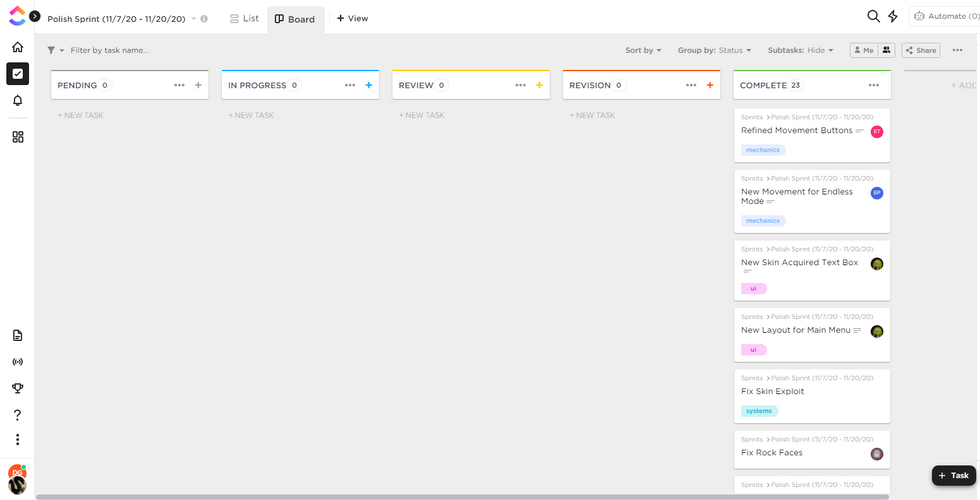Previous Projects: IMUGI
- Daniel Garcia
- Nov 3, 2020
- 2 min read
Updated: Apr 13, 2021
Release Date: December 11th, 2020
Seven Person Team
16 week-long development cycle
Created with Unreal Engine 4
Genre: Isometric Puzzle Game
What did I work on?
Producer: I filled the role of Producer alongside my level design responsibilities. As producer, I had been in charge of creating and managing tasks within the team's ClickUp. When approaching task breakdowns, weeks began with team meetings where we prioritized work for each specialization. I broke down the prioritized features or issues into a list of tasks for the week. We split tasks into three groups, programming, art, and design. Each team member had at least one assigned task from the outset of the sprint. After completion of that first task, team members would self-assign tasks from the remaining work assigned to their specialization. The main reasoning for this approach was team availability. Most team members were developing other projects alongside IMUGI. This time split made availability inconsistent and was causing tasks to be leftover at the end of sprints. This approach allowed for the most precise picture of what would be able to be completed during any given sprint. The result of this picture allowed me to adjust scope and the next sprint plan accordingly. Throughout any given week, there were two team meetings where progress and current task statuses were discussed. Alongside these general team meetings, we also had individual meetings to discuss current tasking or assist with ongoing issues. Utilizing this method, I observed a 183% increase in productivity from the week I was onboarded up to the project’s launch day. I measured this increase in productivity by comparing the number of tasks that were marked as “complete” throughout the project. Here are some screenshots of boards used to track tasks:
Level Design: I worked on creating and implementing puzzle designs for 10 of the game's 14 levels using Unreal Engine 4. The level's I worked on have employed the game's box moving, pressure plate, and "Flood" mechanics. These puzzle's revolve around pushing boxes onto pressure plates to reach the other side of the level, which contains a ravine the snake traverses to continue forward. Along with level creation, I was also in charge of set dressing for all of the game's levels. When set dressing, I placed tree/bamboo models, grass (using Unreal's foliage tool), cherry blossom VFX, various rock models, rock walls that blocked the player's path, and textures (for floors, rock walls, and barriers). Alongside my level creation responsibilities, I also created the game's hub and its surrounding environment. Creating the hub required me to work with the camera system, a system I had not yet touched in unreal, to ensure that the player was visible from all points on the hub mountain. This was achieved by setting up several camera points that activated when the player entered their radius. Here are some images of levels I created within IMUGI:
















Comments